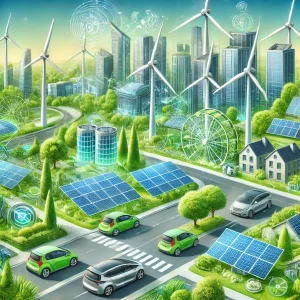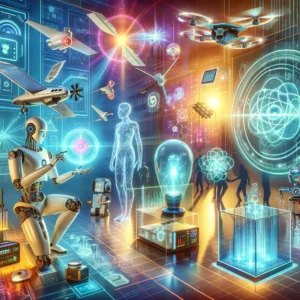The Rise of Green Technology: Innovations for a Sustainable Future

The Rise of Green Technology: Innovations for a Sustainable Future.
The world faces mounting environmental challenges, from climate change to depleting natural resources. As these issues escalate, green technology has emerged as a beacon of hope, offering innovative solutions to create a more sustainable future. But what exactly is green technology, and how is it transforming industries worldwide? Let’s dive into the latest innovations driving this revolution.
—
What Is Green Technology?
Green technology, or “clean technology,” refers to the development and application of products, equipment, and systems that conserve resources and reduce environmental impact. Its primary goal is to minimize carbon footprints, reduce waste, and create sustainable solutions for a healthier planet.
—
Key Innovations in Green Technology
1. Renewable Energy Systems
The adoption of renewable energy sources such as solar, wind, and hydroelectric power has skyrocketed. These technologies offer clean, sustainable alternatives to fossil fuels. For example:
Solar panels: Advances in photovoltaic cells have made solar energy more efficient and affordable.
Wind turbines: Modern wind farms generate significant energy, often powering entire communities.
READ ALSO: How Smart Glasses Could Transform Everyday Life.
2. Electric Vehicles (EVs)
Electric vehicles are redefining transportation. With zero emissions and improved battery technologies, EVs are becoming more accessible to the average consumer. Companies like Tesla and Rivian are leading the charge, while traditional automakers are rapidly transitioning to electric models.
3. Smart Grids
Smart grid technology optimizes electricity distribution, reducing waste and improving efficiency. By integrating renewable energy sources and using AI to manage demand, smart grids ensure a stable and sustainable energy supply.
4. Green Building Materials
The construction industry is embracing sustainable materials like bamboo, recycled steel, and hempcrete. These materials reduce carbon emissions and promote energy efficiency in buildings.
5. Waste-to-Energy Systems
Innovative systems are converting waste into usable energy. Technologies like anaerobic digestion and pyrolysis transform organic waste into biogas or electricity, reducing landfill use and pollution.
6. Vertical Farming
Vertical farming uses hydroponic and aeroponic systems to grow crops in controlled indoor environments. This method minimizes water usage, eliminates the need for pesticides, and allows food production in urban areas.
7. Carbon Capture and Storage (CCS)
CCS technology captures carbon dioxide emissions from industrial processes and stores them underground. This innovation is critical for reducing greenhouse gas emissions and mitigating climate change.
—
The Role of AI and IoT in Green Technology
Artificial intelligence (AI) and the Internet of Things (IoT) are revolutionizing green technology by enhancing efficiency and monitoring environmental impact. For instance:
AI in agriculture: Precision farming uses AI to analyze soil data, optimize irrigation, and reduce fertilizer use.
IoT in energy management: Smart devices monitor energy consumption and automate systems to minimize waste.
—
Green Technology in Action: Real-World Examples
1. Solar-Powered Cities
Cities like Las Vegas and San Diego are investing in large-scale solar projects to reduce reliance on non-renewable energy sources.
2. Eco-Friendly Transportation
Countries like Norway are leading the transition to electric vehicles, with over 75% of new cars sold being electric.
3. Sustainable Packaging
Companies such as Unilever and Coca-Cola are adopting biodegradable packaging solutions to combat plastic pollution.
—
The Benefits of Green Technology
1. Environmental Impact: Reduces pollution and conserves natural resources.
2. Economic Growth: Creates new industries and jobs.
3. Energy Efficiency: Lowers costs for businesses and consumers.
4. Health Improvements: Reduces air and water pollution, improving public health.
—
Challenges Facing Green Technology
Despite its potential, green technology faces hurdles such as high initial costs, lack of infrastructure, and resistance to change. Overcoming these challenges requires collaboration between governments, industries, and consumers.
—
The Future of Green Technology
The future of green technology is bright, with continuous advancements promising even greater sustainability. Emerging trends include:
Hydrogen fuel cells: Offering a clean energy source for vehicles and industrial processes.
Biodegradable electronics: Reducing electronic waste.
Geoengineering: Innovative techniques to counteract climate change.
—
Conclusion
Green technology is no longer a niche field; it is a critical component of global efforts to combat environmental challenges. By embracing these innovations, we can pave the way for a sustainable future that benefits both the planet and its inhabitants.





